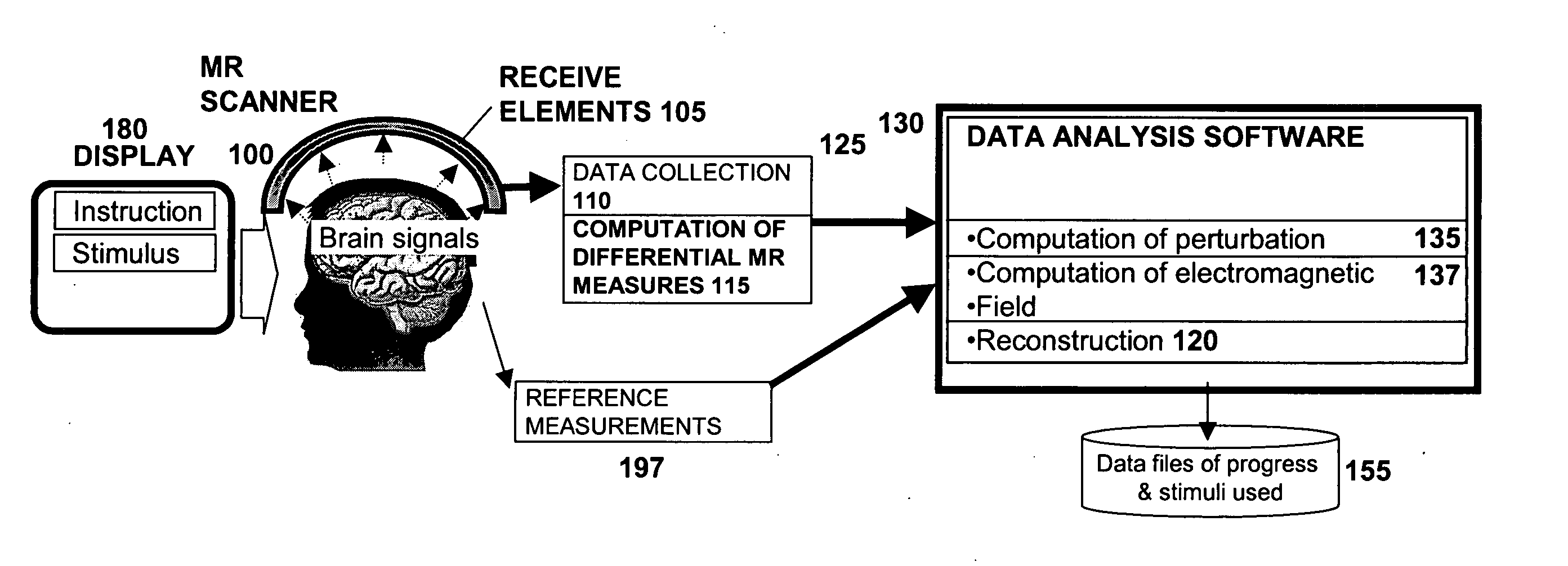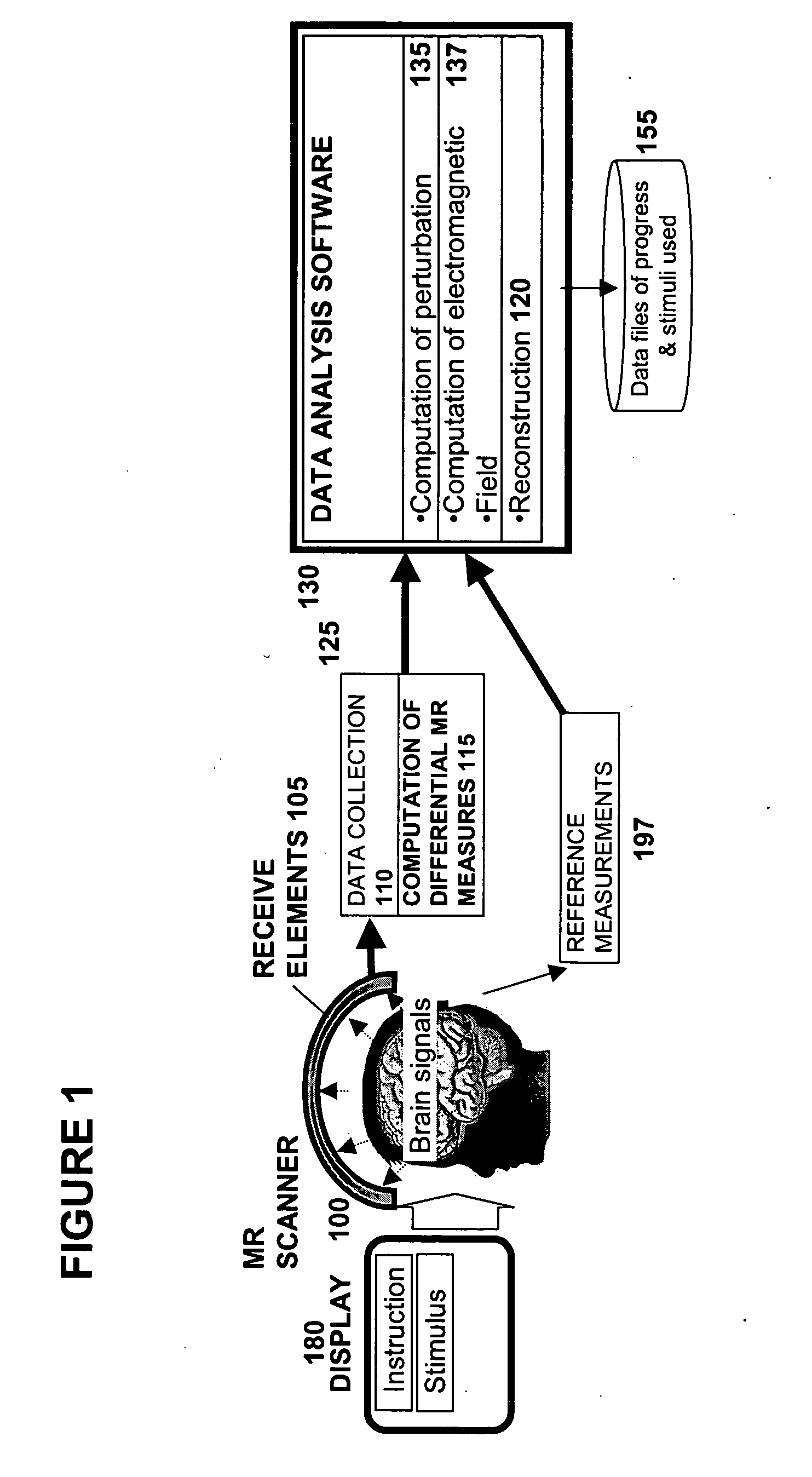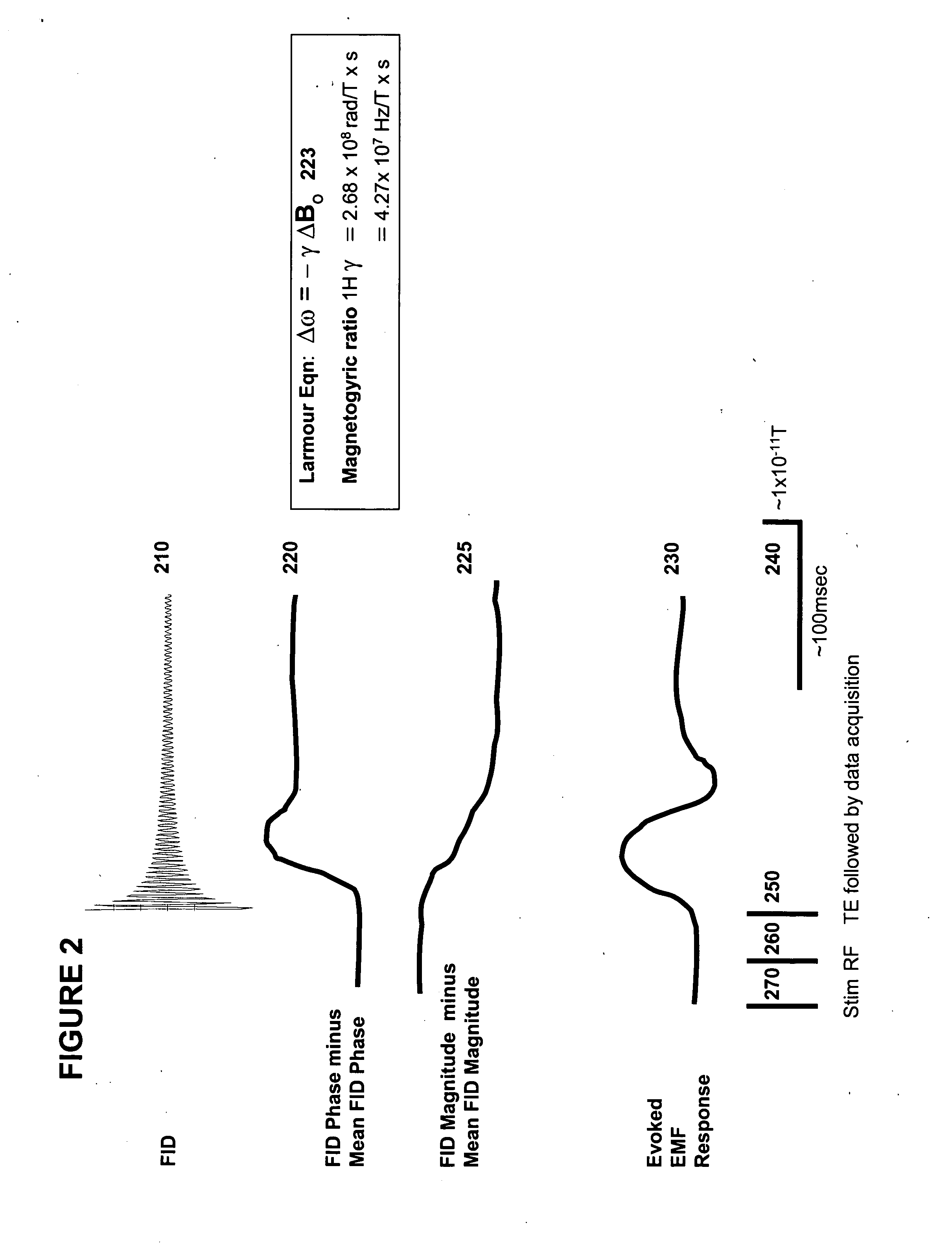Methods for measurement of magnetic resonance signal perturbations
a magnetic resonance signal and perturbation technology, applied in the field of magnetic resonance signal fluctuation measurement, can solve the problems of high temporal resolution, no non-invasive spatial resolution technology, direct measurement, etc., and achieve the effect of reducing the number of invasive measurements, and reducing the accuracy of invasive measurements
- Summary
- Abstract
- Description
- Claims
- Application Information
AI Technical Summary
Benefits of technology
Problems solved by technology
Method used
Image
Examples
examples
[0212] Theoretical Basis and Previous Investigations of MR Phase Measurement
[0213] Precise measurements of Bo fluctuations using MR are explained by the relation that σφ=1 / SNR, whereσφ is the MR phase noise in radians, and SNR is the signal to noise ratio of the MR magnitude signal. The phase value may be substituted into the Larmour equation (expressed in terms of phase): Δφ(r)=γBz(r)TE, where Δφ(r) is the change in phase at a point r resulting from a perturbation of the Bz, TE is the duration of phase accumulation prior to measurement, and γ is the magnetogyric ratio. At 1.5T, an MR signal resonates over 6.4 million cycles during a 100 ms period. Since the MR phase signal represents a small fraction of one cycle, a modest phase precision of 1 / 100th of a cycle (0.06 radians) at 100 ms predicts a ΔB0 measurement precision of 1 part in 100×6.4 million, or 4×10−9 T. Therefore, MR phase measures B0 fluctuations with surprising precision. Nyquist sampling theory limits the frequency re...
example
Measurement of Neuronal Currents In Vivo
[0277] Rationale Neuronal currents lead to fluctuations in B0 with magnitudes within the precision of methods disclosed here. Therefore, the MR phase timecourse of FIDs may be compared with and without an evoked neuronal response to determine the effect of the neuronal response. In order to induce a repeatable neuronal current, a highly salient, flashed visual checkerboard stimulus may be presented to subjects, precisely synchronized to MR measurements lasting for 120 ms following the stimulus.
[0278] Protocol Differential MR phase data may be collected using a target voxel selected in the visual cortex with a 5″ surface coil placed adjacent, while a differential signal was measured from a second voxel in a frontal region using a second receive coil a similar distance from the chest. Stimuli may be presented using a DLP projector as diagrammed in Visual Stimulus Protocol #1.
[0279] Results Neuronal currents may be measured using this approach...
PUM
 Login to View More
Login to View More Abstract
Description
Claims
Application Information
 Login to View More
Login to View More - R&D
- Intellectual Property
- Life Sciences
- Materials
- Tech Scout
- Unparalleled Data Quality
- Higher Quality Content
- 60% Fewer Hallucinations
Browse by: Latest US Patents, China's latest patents, Technical Efficacy Thesaurus, Application Domain, Technology Topic, Popular Technical Reports.
© 2025 PatSnap. All rights reserved.Legal|Privacy policy|Modern Slavery Act Transparency Statement|Sitemap|About US| Contact US: help@patsnap.com



